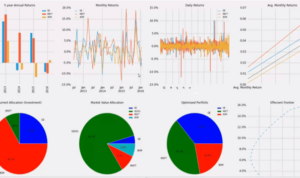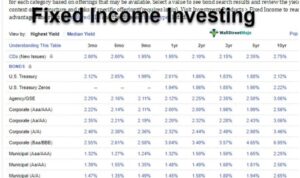Diving deep into the world of dividend investing strategies, this introduction sets the stage for a rollercoaster ride of financial wisdom and strategic insights. Get ready to explore the dynamic landscape of dividend investments like never before.
As we embark on this journey, we will uncover the intricacies of different strategies, the factors to consider, the art of building a solid portfolio, the power of reinvesting dividends, and the crucial task of monitoring and evaluating investments. Strap in for a wild ride through the realm of dividends and wealth building.
Introduction to Dividend Investing
Dividend investing is a strategy where investors focus on purchasing stocks that pay out dividends regularly. These dividends are a portion of the company’s profits distributed to shareholders, providing them with a steady stream of income.
Benefits of Dividend Investing
- Steady Income: By investing in dividend-paying stocks, investors can receive regular payments, which can be especially beneficial for those looking for a consistent source of income.
- Historical Performance: Dividend-paying stocks have shown to outperform non-dividend-paying stocks over the long term, providing investors with potential for capital appreciation along with income.
- Compounding Effect: Reinvesting dividends can accelerate the growth of an investment portfolio over time, as the reinvested dividends generate additional returns.
- Lower Volatility: Dividend-paying stocks tend to be more stable during market downturns, providing investors with a cushion against market volatility.
Types of Dividend Investing Strategies
When it comes to dividend investing, there are several strategies that investors can use to build a portfolio. Each strategy has its own unique characteristics in terms of risk and return, catering to different investment goals and risk tolerances.
Dividend Growth Strategy
The dividend growth strategy focuses on investing in companies that have a history of consistently increasing their dividend payouts over time. These companies are often well-established with strong fundamentals and a track record of stable earnings growth. Investors who follow this strategy are looking for companies that not only pay dividends but also have the potential to increase them regularly. Examples of companies suitable for this strategy include Johnson & Johnson, Coca-Cola, and Procter & Gamble.
High Yield Strategy
On the other hand, the high yield strategy involves investing in companies that offer high dividend yields, often at the expense of dividend growth potential. These companies may have higher risks associated with their business models or financial stability, but they attract investors seeking immediate income from their investments. Examples of companies suitable for this strategy include AT&T, Altria Group, and Exxon Mobil.
Value Investing Strategy
Value investing in dividends involves seeking out companies that are undervalued by the market but have the potential for long-term growth and sustainable dividend payments. Investors following this strategy look for companies with strong fundamentals that the market has overlooked, providing an opportunity for capital appreciation along with dividend income. Examples of companies suitable for this strategy include IBM, Chevron, and Pfizer.
Factors to Consider in Dividend Investing

When selecting dividend-paying stocks, there are several key factors investors should consider to make informed decisions and maximize their returns.
Dividend Yield
The dividend yield is a crucial factor to consider as it indicates the annual dividend income a stock pays relative to its price. A higher dividend yield suggests a higher return on investment, but it’s essential to ensure the yield is sustainable and not artificially inflated.
Payout Ratio
The payout ratio is another important metric to evaluate when selecting dividend-paying stocks. It represents the percentage of earnings a company pays out to shareholders as dividends. A lower payout ratio indicates that a company has more room to grow its dividends in the future.
Dividend History
Analyzing a company’s dividend history can provide valuable insights into its stability and reliability. Companies with a consistent track record of paying and increasing dividends over time are often considered more attractive for dividend investors.
Economic Conditions Impact
Economic conditions play a significant role in dividend investing. During economic downturns, companies may cut or suspend dividends to preserve cash flow. It’s crucial for investors to assess how economic factors such as interest rates, inflation, and overall market conditions can affect a company’s ability to maintain its dividend payments.
Building a Dividend Portfolio
Building a diversified dividend portfolio is crucial for long-term success in dividend investing. Diversification helps spread risk across different assets, reducing the impact of any single investment on your overall portfolio.
Tips for Building a Diversified Dividend Portfolio
- Invest in companies from different industries to avoid sector-specific risks.
- Consider investing in both domestic and international dividend-paying stocks to reduce geographic risk.
- Include a mix of large-cap, mid-cap, and small-cap companies for a balanced portfolio.
- Allocate funds across various sectors such as healthcare, technology, consumer goods, and utilities to diversify your holdings.
The Role of Sector Allocation in Dividend Investing
Sector allocation plays a vital role in dividend investing as different sectors perform differently based on economic conditions. By diversifying your portfolio across sectors, you can mitigate risks associated with sector-specific events impacting your investments.
Strategies for Managing Risk in a Dividend Portfolio
- Regularly review and rebalance your portfolio to ensure it aligns with your investment goals and risk tolerance.
- Monitor company fundamentals and dividend sustainability to avoid investing in companies with unstable dividend payouts.
- Consider adding bonds or other fixed-income securities to your portfolio to balance out the volatility of dividend stocks.
- Use dividend reinvestment plans (DRIPs) to automatically reinvest dividends back into the company’s stock, compounding your returns over time.
Reinvesting Dividends
When it comes to dividend investing, reinvesting dividends is a key strategy that can help investors compound their returns over time. By reinvesting the dividends received from their investments back into the same securities, investors can take advantage of the power of compounding to accelerate wealth growth.
Advantages and Disadvantages of Reinvesting Dividends
- Advantages:
- Compound Returns: Reinvesting dividends allows investors to earn returns not just on their initial investment, but also on the dividends received, leading to accelerated growth of their investment portfolio.
- Automatic Diversification: Reinvesting dividends back into the same securities can help diversify the portfolio over time without incurring additional costs.
- Increased Long-Term Wealth: Over time, the compounding effect of reinvesting dividends can significantly increase the overall wealth of the investor.
- Disadvantages:
- Lack of Flexibility: Reinvesting dividends may limit the investor’s ability to use the cash for other investment opportunities or expenses.
- Tax Implications: Reinvested dividends are still subject to taxes, which may impact the overall returns for the investor.
- Market Volatility: In volatile market conditions, reinvesting dividends may lead to buying more shares at higher prices, potentially affecting the overall performance of the investment.
Examples of Accelerated Wealth Growth with Reinvesting Dividends
For example, let’s consider an investor who reinvests $1,000 in dividends received annually at an average annual return of 8%. After 30 years, the initial $1,000 investment would grow to over $10,000 without any additional contributions, solely due to the power of reinvesting dividends.
Monitoring and Evaluating Dividend Investments
When it comes to dividend investing, monitoring your investments is crucial to ensuring you are on track to meet your financial goals. By keeping a close eye on dividend payments and stock performance, you can make informed decisions about when to reevaluate your investments and potentially make adjustments.
Methods for Monitoring Dividend Payments and Stock Performance
Tracking dividend payments and stock performance can be done through various methods, including:
- Setting up alerts or notifications for dividend payments
- Regularly reviewing financial statements and reports
- Monitoring stock prices and performance compared to market benchmarks
- Utilizing online tools and resources for analysis and comparison
When to Reevaluate Dividend Investments and Make Adjustments
It is important to reevaluate your dividend investments on a regular basis, especially in the following situations:
- Significant changes in company financials or management
- Market volatility or economic shifts impacting stock performance
- Failure to meet dividend growth expectations
The Importance of Staying Informed about Company Financials and Market Trends
Staying informed about company financials and market trends is essential for successful dividend investing because:
- It helps you make informed decisions based on accurate information
- Allows you to anticipate potential risks or opportunities in the market
- Enables you to adjust your investment strategy based on changing conditions






